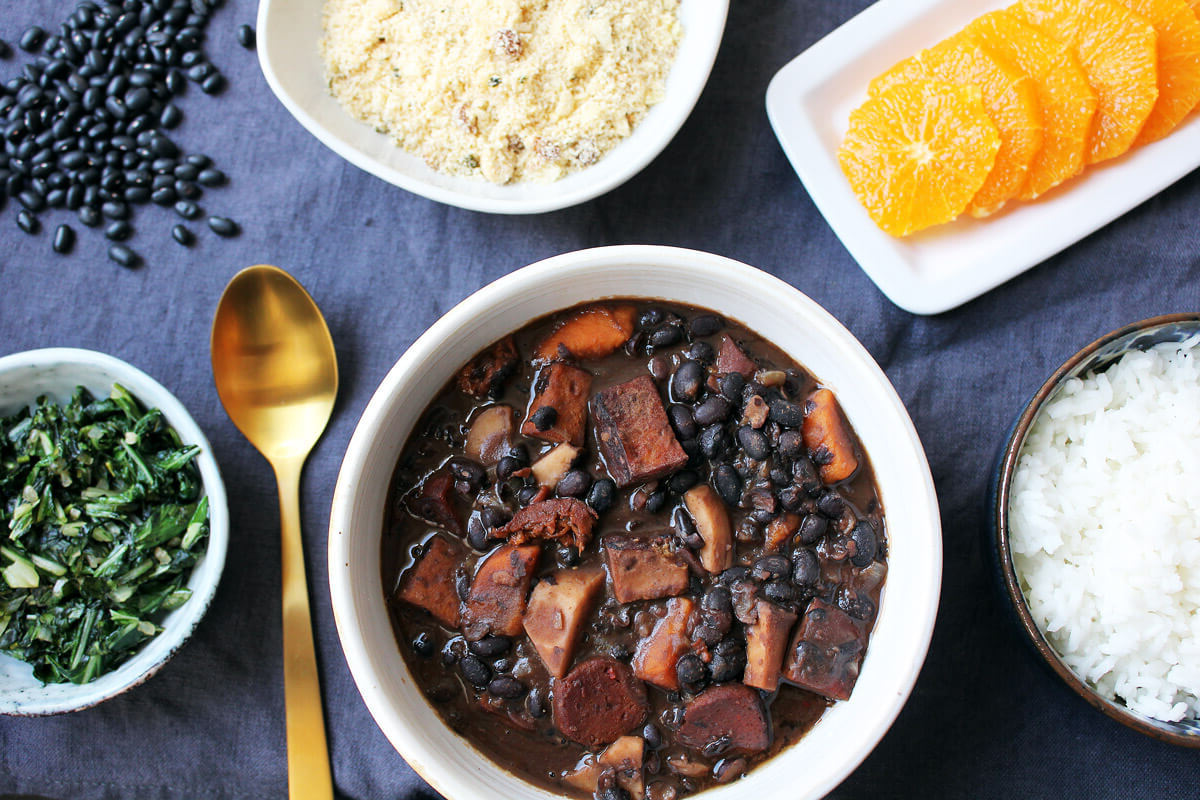The Fascinating Story Behind Brazil’s Beloved Feijoada

Ever wondered what makes Brazil’s Feijoada so special? This hearty black bean stew, often considered the national dish, has a rich history that dates back centuries. Originating from the fusion of African, Portuguese, and indigenous influences, Feijoada tells a story of resilience and cultural blending. Traditionally, it includes black beans, pork, and beef, simmered together to create a flavorful and comforting meal. Served with rice, collard greens, and orange slices, this dish is more than just food; it’s a celebration of Brazil’s diverse heritage. Ready to learn more about this iconic dish and maybe even try making it yourself? Let’s dive in!
The Origins of Feijoada
Feijoada, Brazil's beloved black bean stew, has a rich history that reflects the country's diverse cultural influences. This hearty dish, often enjoyed with family and friends, is more than just a meal; it's a symbol of Brazilian heritage.
Portuguese Influence
The roots of feijoada can be traced back to Portuguese settlers who brought their culinary traditions to Brazil. They introduced the concept of stews made with beans and pork, which laid the foundation for feijoada.
African Contributions
Enslaved Africans played a significant role in shaping feijoada. They added their own flavors and ingredients, such as black beans and various cuts of pork, creating a unique blend that became a staple in Brazilian cuisine.
Indigenous Ingredients
Indigenous people contributed local ingredients like cassava flour (farofa) and collard greens (couve) to the dish. These additions enhanced the flavors and made feijoada a true representation of Brazil's culinary diversity.
Traditional Ingredients of Feijoada
Feijoada's rich and savory taste comes from a combination of carefully selected ingredients. Each component adds a unique flavor, making this dish a favorite among Brazilians.
Black Beans
The star of the dish, black beans, provide a hearty base and absorb the flavors of the other ingredients, creating a deliciously rich stew.
Pork Cuts
Various cuts of pork, including sausage, bacon, and ribs, are essential to feijoada. These meats add depth and a smoky flavor that defines the dish.
Garlic and Onions
Garlic and onions are sautéed to create a flavorful base for the stew. Their aromatic qualities enhance the overall taste of feijoada.
How Feijoada is Prepared
Preparing feijoada is a labor of love that requires time and patience. The process involves several steps to ensure the flavors meld perfectly.
Soaking the Beans
Black beans are soaked overnight to soften them and reduce cooking time. This step is crucial for achieving the right texture.
Cooking the Meats
Pork cuts are cooked separately to render their fat and develop a rich, smoky flavor. This step ensures the meats are tender and flavorful.
Combining Ingredients
The soaked beans, cooked meats, garlic, and onions are combined in a large pot and simmered slowly. This allows the flavors to meld and create a harmonious stew.
Serving Feijoada
Feijoada is traditionally served with a variety of accompaniments that complement its rich flavors. These side dishes enhance the dining experience and make the meal complete.
Rice
White rice is a staple side dish that balances the richness of feijoada. It provides a neutral base that allows the flavors of the stew to shine.
Farofa
Farofa, made from toasted cassava flour, adds a crunchy texture and a slightly nutty flavor. It's often sprinkled over the stew for added depth.
Collard Greens
Sautéed collard greens (couve) provide a fresh, slightly bitter contrast to the hearty stew. They add a pop of color and a healthy element to the meal.
Orange Slices
Orange slices are a traditional accompaniment that adds a refreshing citrus note. They help cut through the richness of the stew and cleanse the palate.
Feijoada: A Cultural Experience
Feijoada is more than just a dish; it's a cultural experience that brings people together. Sharing a meal of feijoada is a way to celebrate Brazilian heritage and enjoy the company of loved ones.
Feijoada Fridays
In Brazil, many families and restaurants serve feijoada on Fridays. This tradition creates a sense of community and anticipation for the weekend.
Carnival Celebrations
During Carnival, feijoada is often enjoyed as a festive meal. Its hearty nature provides sustenance for the lively celebrations and long nights of dancing.
Family Gatherings
Feijoada is a popular choice for family gatherings and special occasions. Preparing and sharing this dish strengthens bonds and creates lasting memories.
Feijoada: A Dish That Tells Brazil's Story
Feijoada isn't just a meal; it's a piece of Brazilian history. This hearty stew, made from black beans and pork, reflects the country's diverse cultural influences. From its roots in Portuguese cuisine to the African slaves who added their own touches, feijoada embodies Brazil's melting pot of traditions. It's a dish that brings people together, often enjoyed during family gatherings or festive occasions. When you savor feijoada, you're not just tasting food; you're experiencing a rich tapestry of history and culture. Whether you're visiting Brazil or trying to recreate it at home, feijoada offers a delicious way to connect with the country's vibrant heritage. So next time you dig into a bowl of this iconic stew, remember the story it tells and the generations it has nourished.

